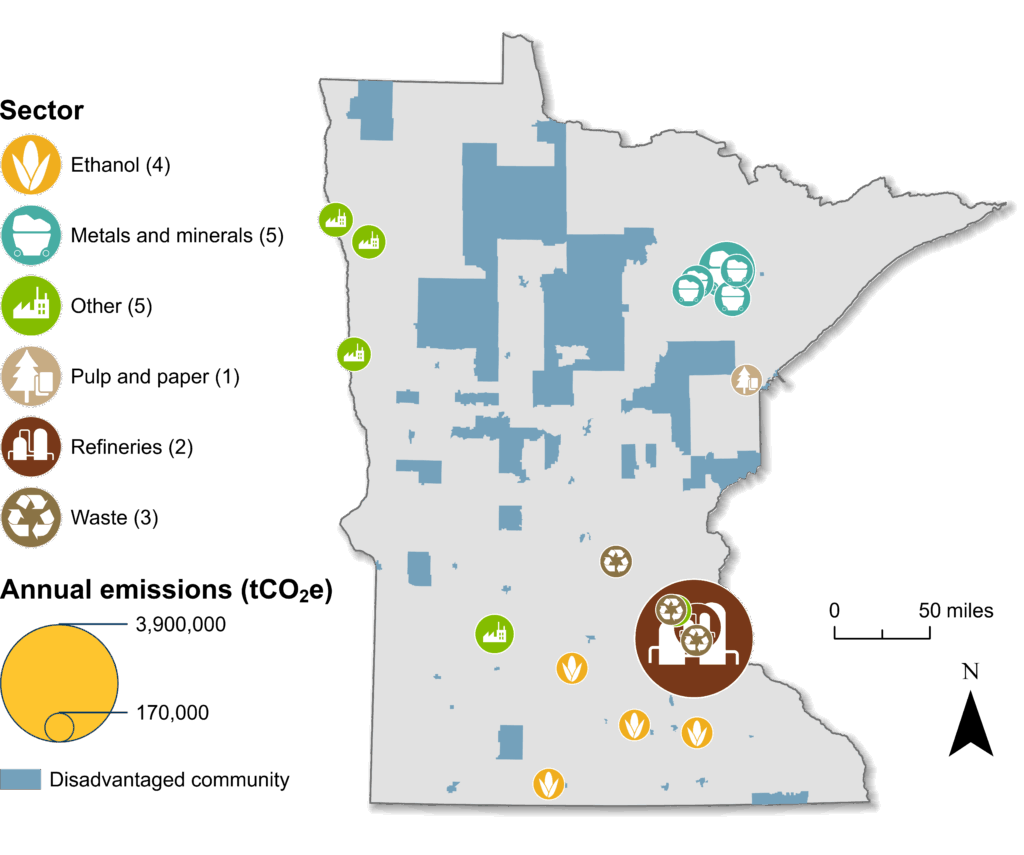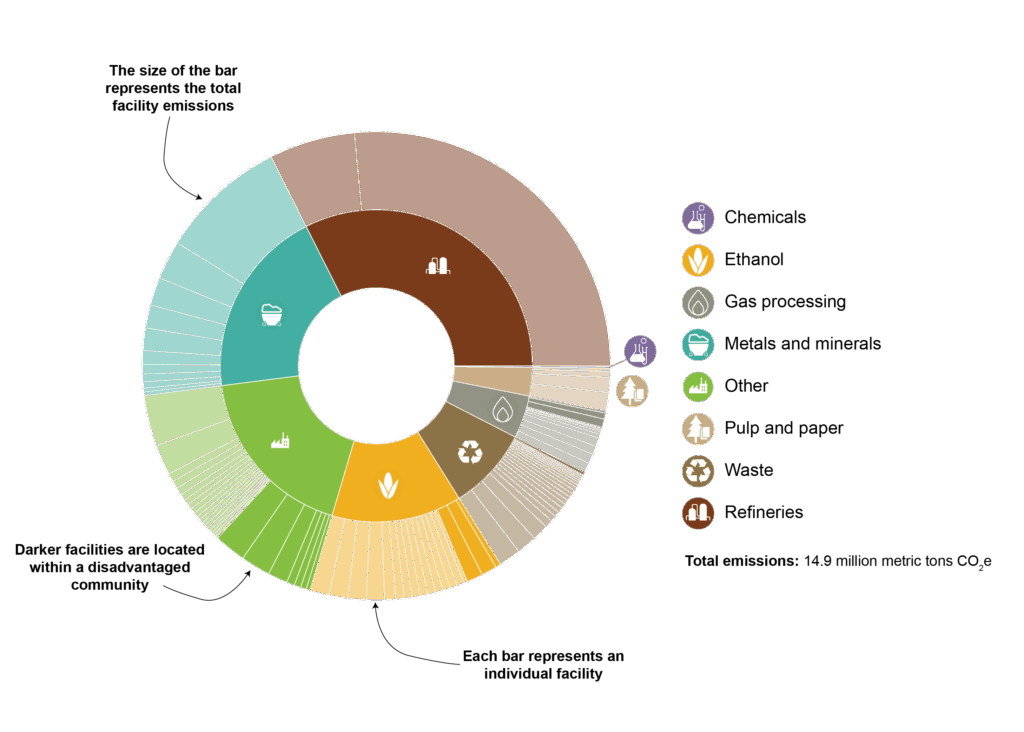Minnesota
Minnesota ranks among the top 15 states in industrial emissions. Refineries, miscellaneous combustion (ethanol and food production), and metals are among the highest-emitting sectors. Iron mining and sugar beet refining have long been pillars of the state’s industrial sector. Minnesota has several industrial clusters. Refining and chemical production is concentrated in the Twin Cities region, iron mining in the northeast, and sugar beet processing in the southeast and northwest.

- The top 20 emitters are shown on this map, coded by industrial sector. The size of the circles corresponds to emissions: the larger the circle, the higher the emissions.
- Disadvantaged communities (as determined by the federal government) are shaded blue.

- The inner circle provides a visual representation of the share of emissions generated by each industrial sector.
- The outer circle also indicates the share of a sector’s emissions generated in disadvantaged communities.
STATE ENERGY POLICY:
Considering a state’s broader energy policy landscape is helpful when developing policies to support industrial modernization. Minnesota has established greenhouse gas emissions targets, a renewable portfolio standard, and a carbon-free energy standard. Minnesota has not established a clean heat standard. While these formal commitments are not prerequisites for innovative industrial policy, they can provide a supportive framework. In addition, streamlining permitting and establishing an efficient, transparent appeals process that engages local communities early while giving clarity and assurances to project developers are key components of effective state energy policy. Discussions around innovative industrial policy present an opportunity for broader conversations about state energy policy to ensure a mutually reinforcing strategy.
LEGISLATIVE context & opportunity:
Let us know if you are aware of additional legislation advancing industrial innovation in Minnesota that should be featured. The context below is not exhaustive and serves as an example of recent policies and programs and where there may be future opportunities:
- Buy Clean Buy Fair Minnesota: Buy Clean was enacted in 2023 and established an Environmental Standards and Procurement Task Force to help the state develop procurement methods for cleaner and more efficient materials for infrastructure projects.
- Heartland Hydrogen Hub: Minnesota and five other states are part of the Heartland Regional Clean Hydrogen Hub. Independent of the outcome of the regional hubs, there is strong interest in building a clean hydrogen economy in the region.
- A factsheet by the Renewable Thermal Collaborative identifies electrification of Minnesota’s plastic recycling, beet sugar, and soybean oil subsectors as opportunities to reduce emissions significantly.
- Carbon management technologies are another opportunity to reduce industrial emissions in the state. Learn more about the economically feasible subsectors in Minnesota and facilities that qualify for the federal 45Q tax credit.
Minnesota has enacted and considered a range of legislation that supports industrial innovation, including carbon capture, clean hydrogen, and procurement. Explore recent legislation in Minnesota and all 50 states by clicking on a specific year: 2025 legislation, 2024 legislation, 2023 legislation.
